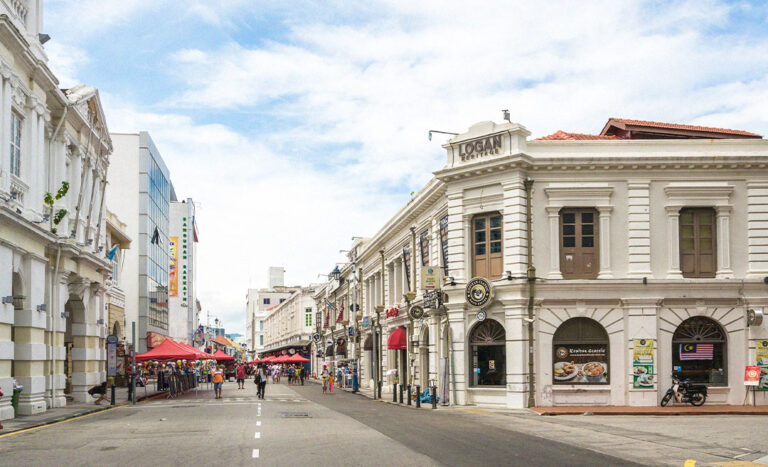Every street has a tale to tell, especially in a culturally and historically rich state like Penang. From the busy streets of George Town to the tranquil roads of the countryside, their stories will take you on a fascinating journey through history.
Although we’ll be focusing on roads in the city of George Town, these streets show how the island of Penang has changed over time and how its past and present continue to be full of life. Come along as we take a stroll through time and explore the enchanting tales that have moulded these well-known streets of Penang.
Beach Street
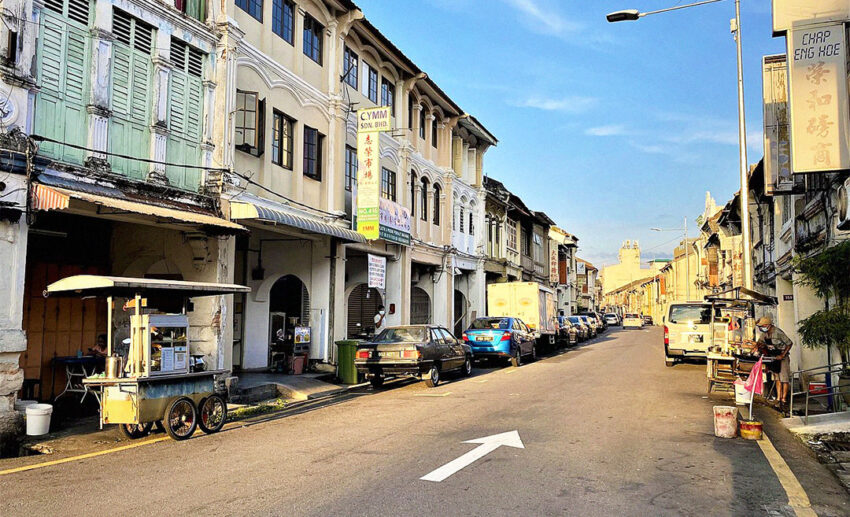
Located in the heart of George Town, Beach Street is one of the oldest streets in Penang, even older than several towns in Peninsula Malaysia, such as Taiping, Ipoh, and Kuala Lumpur. Beach Street was constructed as the primary commercial street for George Town in 1786, about the same time as Light Street was completed.
When constructed, Beach Street was designed to follow the curvature of the shore immediately adjacent to it, in contrast to the linear Light Street. The outcome, still visible today, is a street that mirrors the shoreline as it travels towards the south of George Town.
Bishop Street
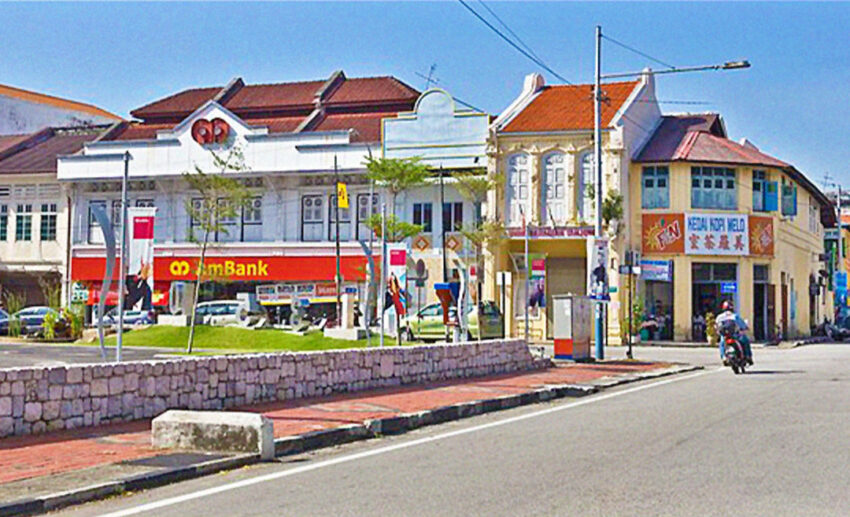
As you would have probably guessed from the name, Bishop Street’s history is rooted in Christianity. Located within the World Heritage City of George Town’s core area, the street is named after Bishop Garnault’s presbytery. Read on for the story of how the presbytery came to be there!
Captain Francis Light, the founding father of Penang, had invited Bishop Garnault of Siam and his Eurasian congregation, who were escaping religious persecution in Ligor and Phuket, to settle on Penang Island. Upon their arrival, Bishop Garnault set up his presbytery along Bishop Street and the Church of the Assumption along Church Street. The church was named, so the congregation’s arrival coincided with the eve of the Feast of the Assumption, a holy occasion for the Catholics. This temporary church was moved to an intersection between Farquhar Street and Love Lane, where the current Church of the Assumption now stands.
Campbell Street
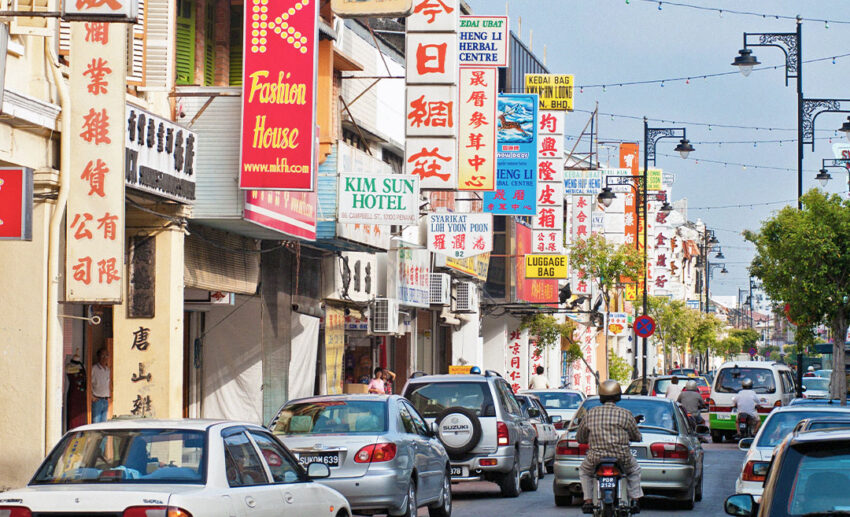
Named after Sir George William Robert Campbell, the Inspector General of Penang from 1866 to 1891, Campbell Street flourished as a red-light district during the last quarter of the 19th century to the early 20th century. Red lanterns were a common sight, a form of advertising for prostitutes offering their services.
Because of the arriving sex workers, many of whom were of Cantonese descent, the phrase ‘fa kai’ or ‘flower street’ was used as a euphemism to reference the street. It was also nicknamed ‘Jalan Nona Baru’ (street of new maidens) and ‘Jalan Makau’ in Malay, referencing Macau, the port city where the Cantonese labourers and prostitutes came from.
By the middle of the 20th century, Campbell Street became a primary retail destination for the townspeople, where people shopped for clothing, watches and shoes. However, by the mid-1970s, businesses started to suffer. Today, most of the stores along this street are run by wholesalers and jewellers.
Carnarvon Street
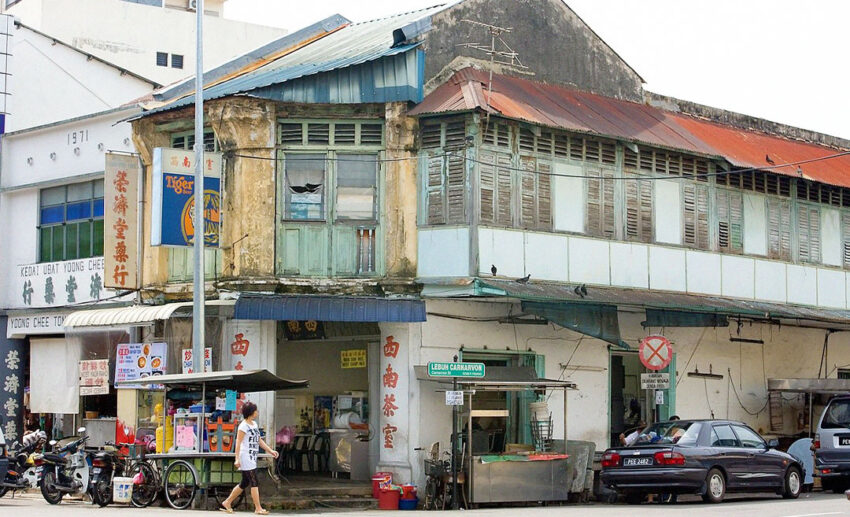
Carnarvon Street was established in the 1860s in honour of Henry Howard Molyneux Herbert, the fourth Earl of Carnarvon. Although how the street was named doesn’t exactly correlate to its history, the road itself has many interesting pasts.
In 1867, the deadly Penang Riots broke out between the ‘White Flag’ and ‘Red Flag’ groups, consisting of folks from the Jawi Peranakan and Indian Muslim communities. The Hokkien societies based along Lebuh Armenian and the Cantonese societies based near Jalan Pintal Tali joined forces with opposite parties of the riot. During the riots, this made Carnarvon Street the dividing line between the town’s Cantonese and Hokkien neighbourhoods.
In the mid-20th century, Carnarvon Street became known for its bookstores and coffin makers. Walking along this street back then, you’ll see many Chinese coffins stacked on top of each other. You’ll also encounter paper effigies used as offerings for the deceased. Any material item from our world can be replicated as paper models and burnt as offerings for relatives in the afterlife. Today, Carnarvon Street is nearly devoid of coffin businesses, save for one or two coffin makers.
Chulia Street
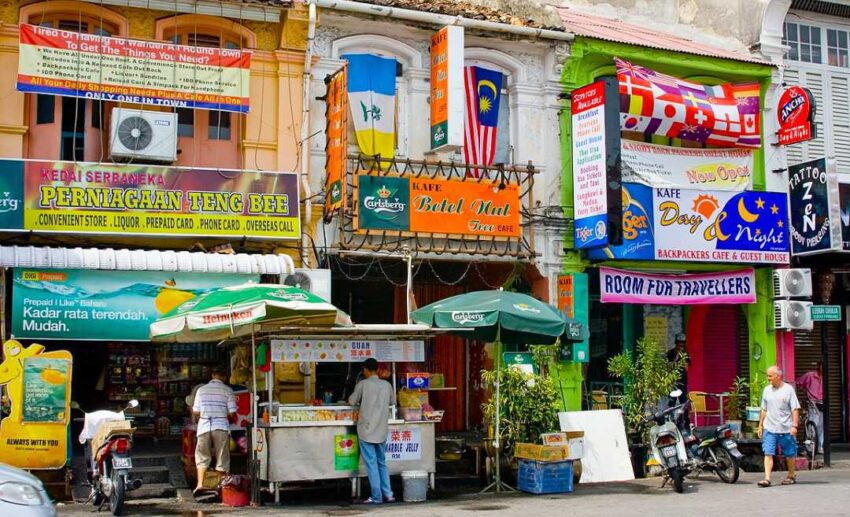
When Captain Francis Light began establishing George Town, Chulia Street was one of the main streets he first built, together with Light Street, Beach Street and Pitt Street. Before it was known as Chulia Street, as a tribute to the Malabari Indians who settled there, it was known as Malabar Street.
From 1798 onwards, it was known as Chulier Street, as it was written back then. Like Malabar, Chulia is a tribute to the old Chola kingdom and the early Indian settlers there. Another name that often appears on Chulia Street is Keling–most prominently at the Kapitan Keling Mosque. The name is derived from the former south Indian Kingdom of Kalinga.
Chulia Street has changed and grown in uniqueness throughout the 20th century, especially in the mid-20th century, when it evolved into a backpacker’s sanctuary. It was a popular destination for budget travellers from the 1980s to 1990s. However, when Georgetown was designated a World Heritage Site in 2008, many affordable accommodations have since turned into boutique hotels.
China Street
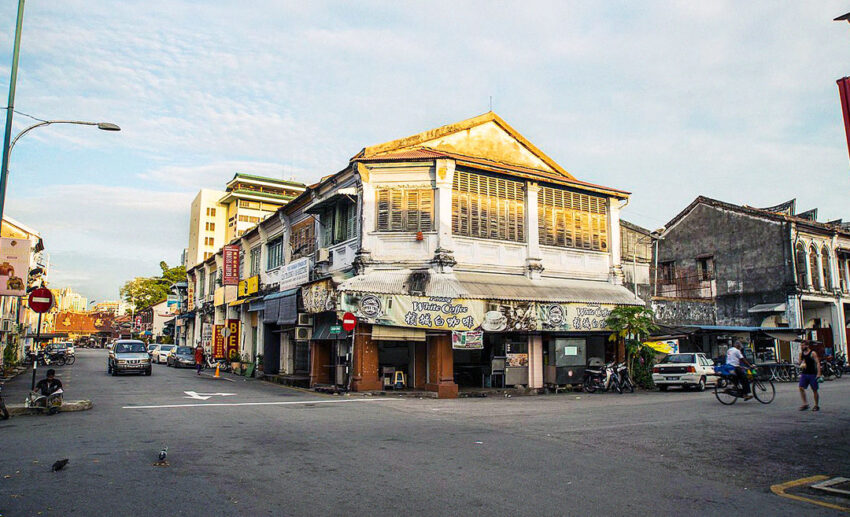
After Captain Francis Light’s 1786 arrival in Penang, it is widely believed that Koh Lay Huan, a prominent member of the Chinese community and an early resident, founded China Street.
In the 18th and 19th centuries, the Koh family played a significant role in Penang’s development. At the time of Penang Town Hall’s construction in the late 19th century, Koh Seang Tat, the grandson of Koh Lay Huan, gifted the Municipal Fountain to the government. The fountain is still standing and functioning today beside the Town Hall building.
Before the 1860s, China Street had a view of the sea, which was the Chinese’s primary trade street. The street was called ‘tua kay’ (Main Street) in Hokkien, and because it was such an important street for them, the Cantonese and Hokkiens constructed their first place of worship together. And that is how the popular Goddess of Mercy Temple came to be: the oldest Chinese temple in Penang.
Penang Road
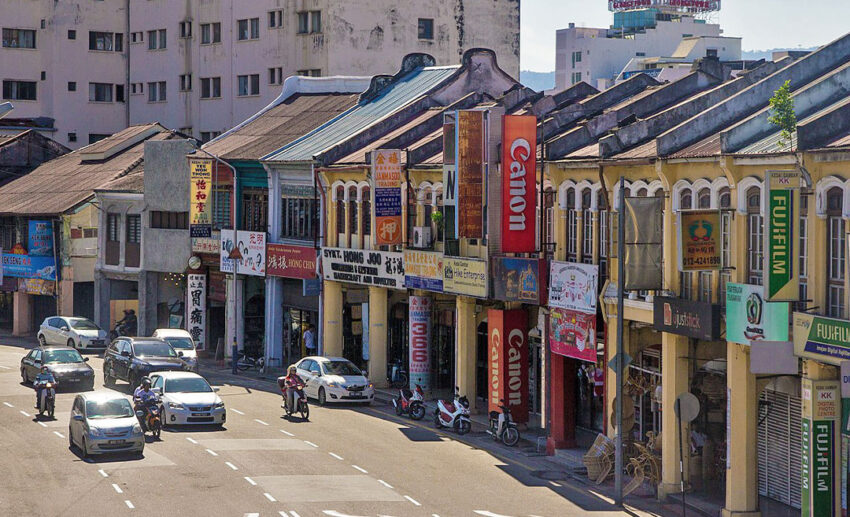
Penang Road was George Town’s principal street during the British colonial era. Out of the original settlement streets that Captain Francis Light had mapped, Penang Road was the first to be constructed. This street has been a shopping haven for hundreds of years, especially in the Chowrasta Market area.
Fun fact: Besides Penang, Singapore also has a Penang Road. Kuala Lumpur also used to have a Penang Road, but it has since been renamed Jalan Pinang.
